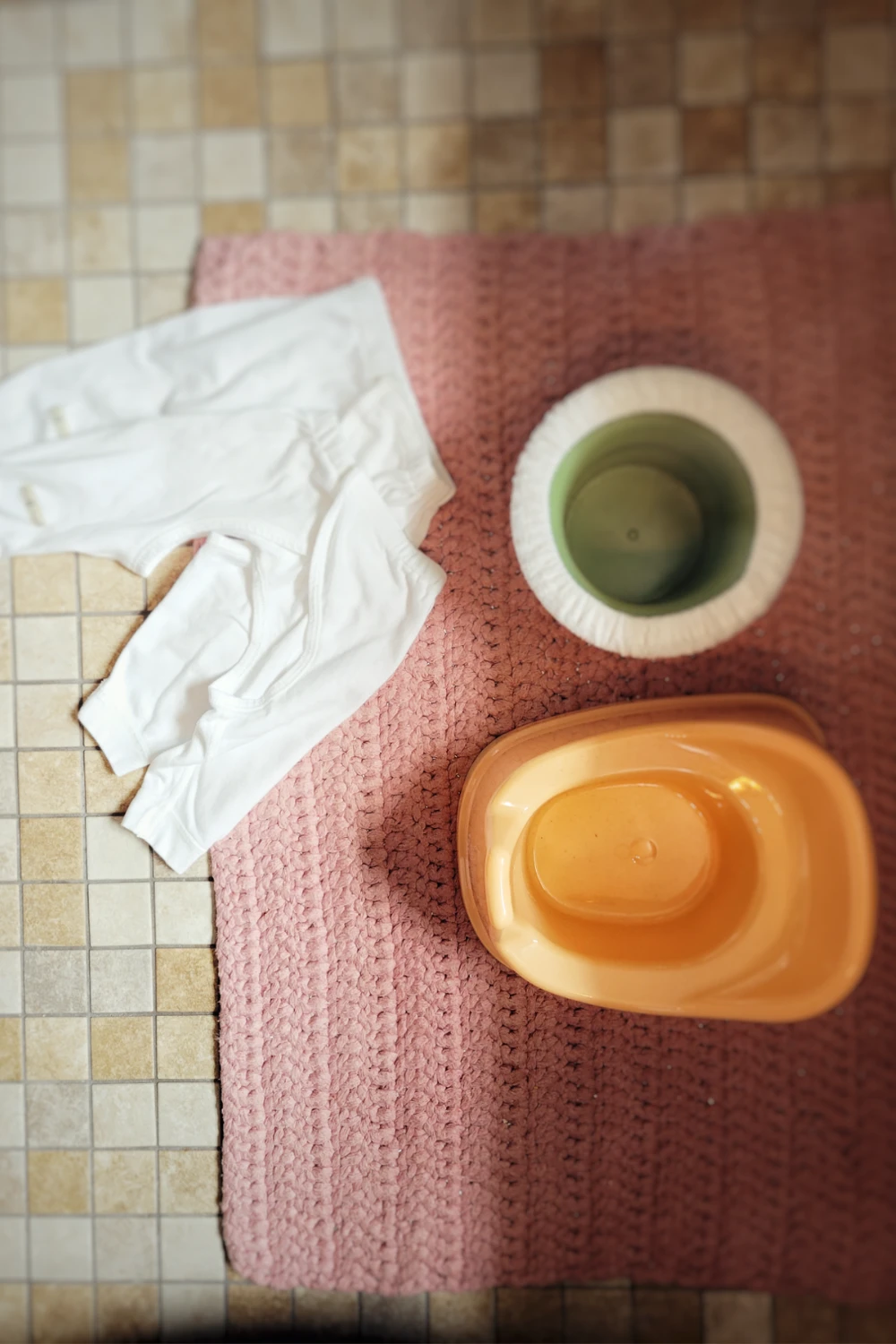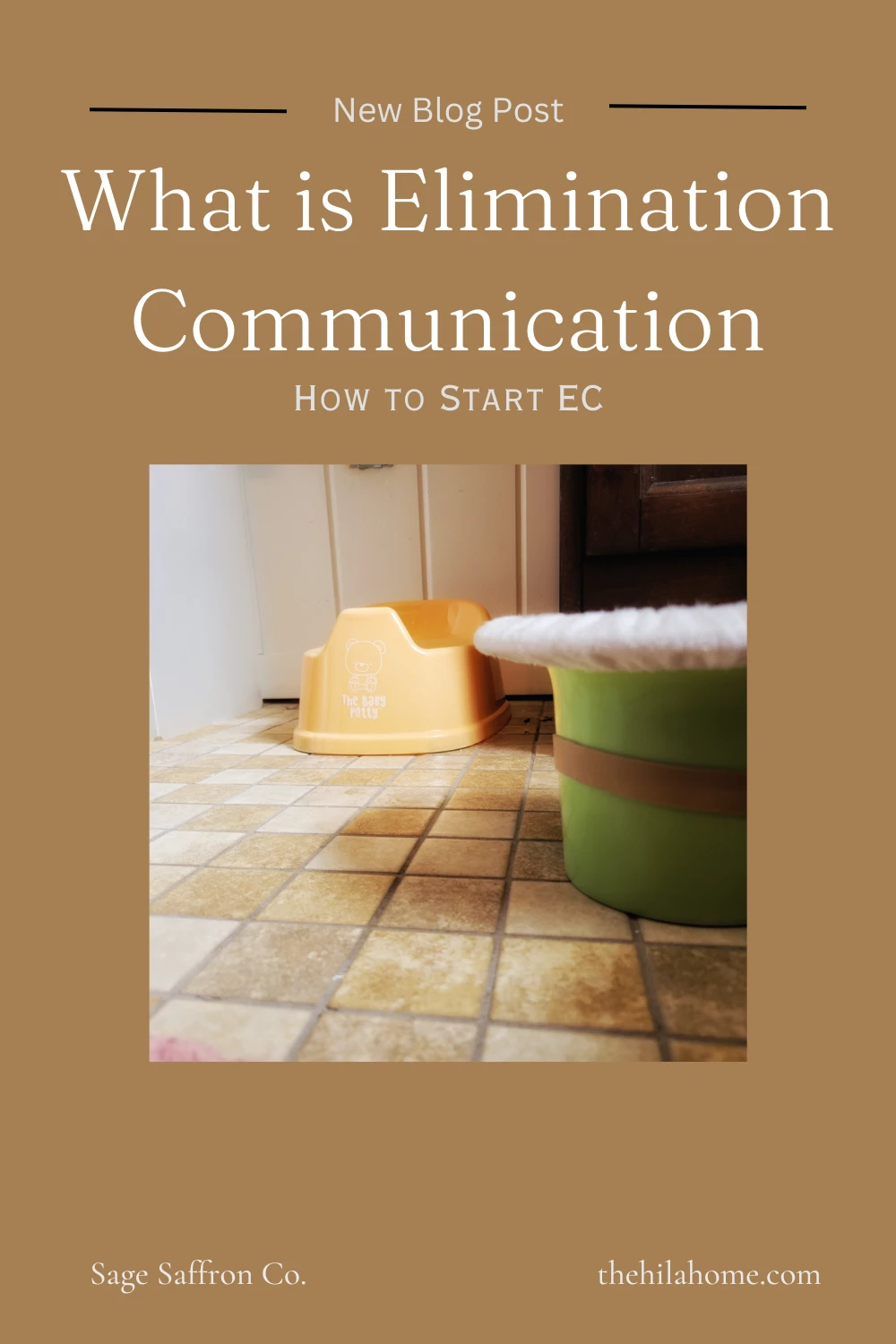
What is Elimination Communication, How to Start EC
Elimination Communication is not something our American culture is in the practice of, however, a couple hundred years ago, it was the way everyone did things. Think about it, what did they do before diapers? It may seem crazy but I encourage you to at least consider it as a practice for your baby, especially if you are doing cloth diapering! It can really cut down on waste and on all the time you have to spend cleaning poopy diapers.
Elimination Communication Basics
What is EC?
Elimination Communication is a form of "infant potty training." But what does that mean? Can you really teach a baby to use the potty and not go in their diaper? Well, not really. What you can do, however, is spot when your baby is bearing down to poop or when he or she would normally pee and hold them over a receptacle. Although you are not "training" them, you are giving them the opportunity to pee or poo when would be natural to them. And as a result? I catch a lot of pees and poo! Poos are especially easy to spot. So it's that simple! You are not toilet training, instead you as the parent are just watching for signs and using them to your advantage.
How Do You Catch Pees?
Now that I've probably blown your mind, you are likely going "But what about the pees, how on earth do you catch those? Do babies really signal when they need to pee?" According to Andrea Olsen of Go Diaper Free babies do actually signal to go pee, and you can discover what your baby's signal is by laying your baby naked for a day or two on a waterproof mat and taking notes about when they pee, how often, and after which signals. Although I did do this in my early days of EC, it is typically not feasible to be watching for "pee signs" when you are working, cleaning, or doing anything really. Of course, if that's what you want to do, go for it, I just don't have the time. So what do I do then? Well, the second part of Elimination Communication focuses on transition times. So think of this: when do you usually need to go to the bathroom? After you wake up? Before you go somewhere? After you've eaten? Maybe once you get home? If you are like most people you probably answered yes to at least one of these, and if you didn't you might want to drink some more water. The same is true for your baby, and this is the method I use. Below are some common "transition times" or what they call "easy catches" in the EC world.
- After the Baby Wakes Up
- After a Feeding
- Before or After Going into a Careseat, Baby Carrier, Swing, Etc.
- At Every Diaper Change
You might already be thinking that your baby pees or poos during some of these times anyway (especially the diaper change) and you might be going "aha" right now in your head. If not no worries, you can start with these transition times, and at least six out of ten times you'll catch something, either a poo or pee or both. For me personally, I focus on after-nap pees and almost always catch something.
How to Start?
Take off the diaper! Just kidding, although this is a common answer. If you are looking to try and rely on signals, this would in fact be your first step, however, most of you probably don't have time to do that and even so, it can be overwhelming if you go this route, especially if you are like me and take every missed signal as a loss. Instead, you just have to tell yourself you're not focusing on signals and that will help ease the stress.
Step One: Figure Out What You Need to Get Started
This may sound contradictory since this is an answer to "how to get started" but sometimes you need certain resources to get started and not having them makes all the difference. For me, I NEEDED the top-hat potty. I have heard of parents holding their baby's over the sink or toilet and pottying them there but that just does not work for me. It kills my back, my baby is not light, and she didn't feel comfortable dangling her bare bum over a bowl like she was going to be dropped in it. So I didn't even consider starting until I had the top-hat potty. Some people need split-crotch pants or baby legwarmers, some people need the tiny potty, and some people don't need anything. So figure out what it is you need that will actually help you do EC and not make this task ten times harder.
Step Two: Decide When You Are Going to Do EC
Next, before you actually do any EC decide when you are going to do EC. Are you going to do it on the weekends? After every nap? At every signal? Every signal only on the weekdays? How and when are you going to do EC and stick with it? There are two reasons for this. One, it will let your baby form a routine so that they at least know what to expect and will likely grow more accustomed to the toilet. And two, because it will help you. If you know that you are only going to do EC at this time then it will help you out. For example, when I first started doing EC I tried doing everything: the signals, all transitions, the poos, everything, and it was just too much. I then looked at what it was I could actually manage and determined that I was going to only do EC on weekdays and Saturdays after she woke up from her nap, and try and catch poos if I could, but not stress that I wasn't going to get to it. I used to incorporate diaper changes, but with the addition of the blog I have dropped that one. So whatever it is, make your decision, plan for it, and then only do that. Because what can happen is you can start beating yourself up about not doing it "all the time" and to be honest, unless you are Andrea Olsen who does this for her business, it's just not possible.
Step Three: Get Started
The last step is just to get started. Once you have all the supplies you need to make this thing work, and once you have a clear mind about how and when you can do EC, then start. If you are doing EC based on signals, this is when you will take the diaper off the baby, watch their elimination patterns, and make notes. Only do this for about two days, and then with your knowledge potty them when you have noted for. For those of you doing your transition time, the next time that opportunity comes up whether it's after a nap, feeding, or diaper change, potty your baby. You will probably not catch anything at first just because if your baby is a couple of months old, this will all be new to them. But eventually, with patience, it should come. I know the first time I pottied my baby I was so surprised she actually went. Something I suggest is to be patient with it. A lot of the time I tend to rush potty time because I feel as though I need to get to my next task, when if I had just waited one more minute she would have gone. I suggest waiting for a whole minute but no longer than five minutes. Sometimes it takes a moment, like it takes us all, to relax and let it come. But there, you've started! I recommend, however, if you are super serious about doing EC, check out Andrea Olsen's Go Diaper Free Podcast and Website. She has some free resources about easy EC catches and a podcast that focuses on common EC problems parents encounter. I get all my Elimination Communication from her. She even has a book Go Diaper Free which focuses on Elimination Communication and the transitioning to actual potty training. This resource is really good if you are getting close to the potty training age and want to wrap things up.
Resources
Elimination communication can be tricky at first so I've listed a couple of resources I used when getting started with EC.
- Go Diaper Free is a book focusing on EC. Andrea Olsen's whole shtick is EC and she provides a wealth of resources through her books, website, and free downloadable guides.
- Tiny Undies is Andrea Olsen's second company of infant potty training supplies to get started. I personally recommend the top hat potty!
- EC Peesy
If you like this content, please share with another Mama like yourself who's interested in learning about EC.
Thank you so much for reading till the end, your support means the world to me. Feel free to follow me on Social Media and Subscribe to my YouTube Channel where I host more content just like this! You all are amazing and I hope you have a blessed day! Thanks!

